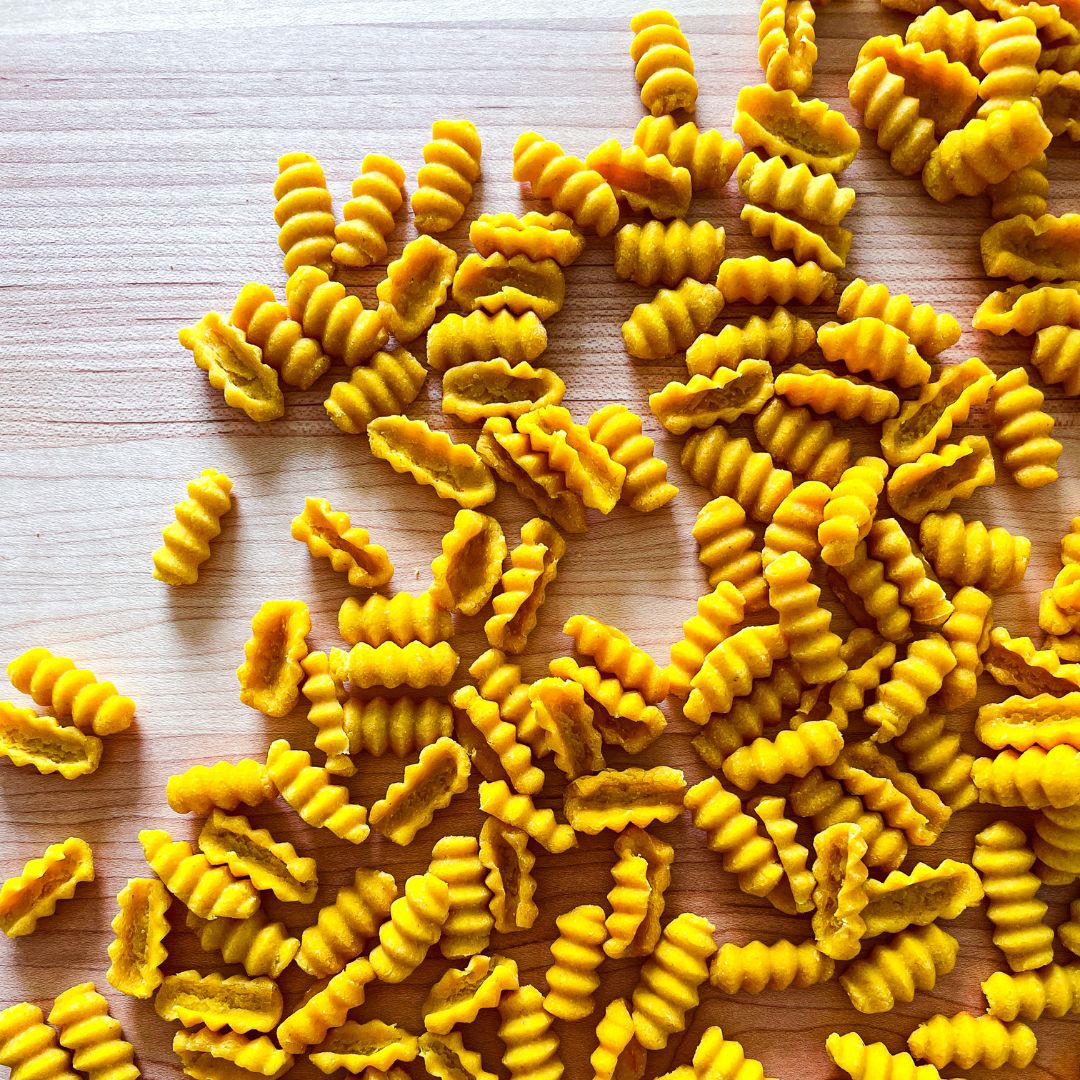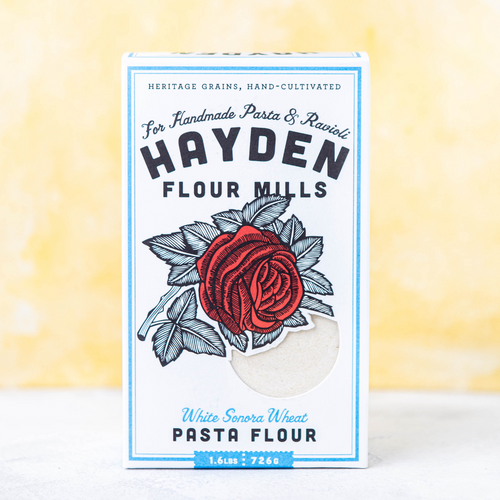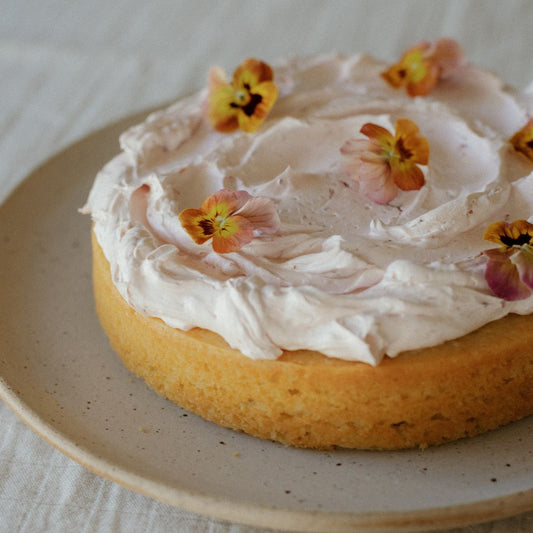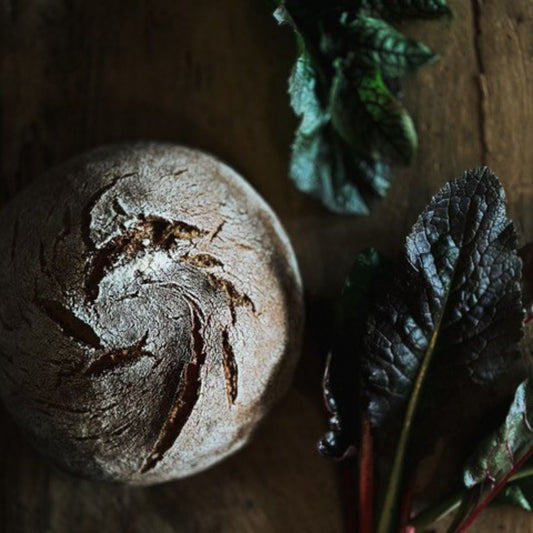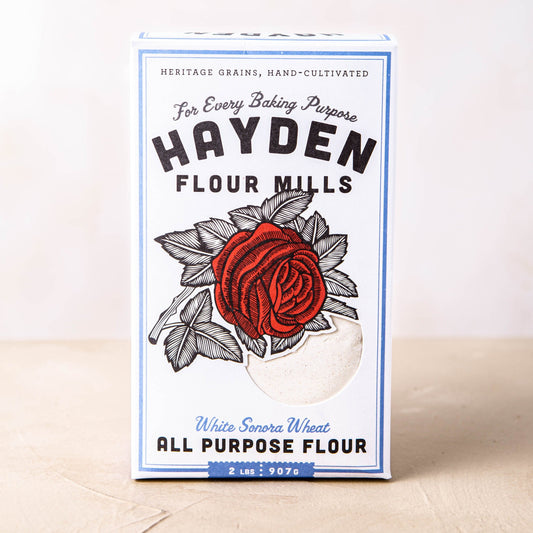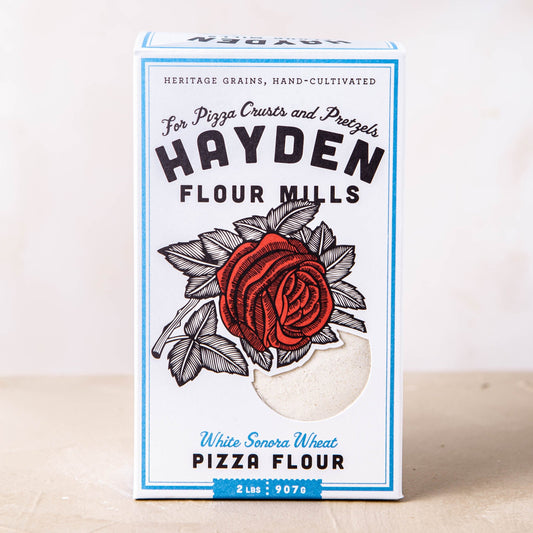What You'll Need
A generous pinch (about ½ teaspoon) saffron threads
200 ml (¾ cup plus 4 teaspoons) hot, but not boiling, water
400 grams (a scant 2½ cups) Pasta Flour
Directions
Prepare the Saffron
Gently crush the saffron threads into a powder using a mortar and pestle or break them up between your fingers and add them to a bowl. Pour the hot water over and steep for 15 minutes. Make the dough according to your preferred method (see below) using the saffron-infused water as the liquid.
Making Pasta Dough By Hand
Weigh the Pasta Flour in a wide mixing or serving bowl. Either keep the flour in the bowl (this prevents runaway liquids) or turn it out onto a work surface. Make a wide “well” in the center with your fist, forming a wall of flour tall enough on all sides to contain the liquid. Pour the saffron-infused water into the well.
Using a fork or dough scraper, gradually incorporate a portion of the flour, a couple of teaspoons or so at a time, from the inner rim of the well into the liquid in a circular motion (à la scrambled eggs) until a thick, custardy batter forms. You’ll use only about a quarter of the flour at this point; the majority will remain loose.
Incorporate the remaining flour into the thickened liquid, either by 1) pulling, folding, and pressing the flour into the center with your hands until it becomes a shaggy ball; 2) vigorously whisking the liquid and loose flour together with the fork until all the liquid is evenly distributed (and it looks like little flaky pebbles); or 3) if you’re working on a flat surface, cutting the flour into the liquid with the help of a bench scraper. If it looks like a total mess—sticky here, flaky there—you’re doing it right.
If you’ve been using a bowl, transfer the mixture to a flat surface, along with any large flaky pieces. It’s also totally normal to have some flour left behind.
Knead the dough vigorously (don’t be shy; you can’t overwork it). I like to push it forward with the heel of my hand, then fold it over on itself about halfway. Do this a few times in one direction, then rotate the dough 90 degrees and repeat, shifting 90 degrees every few strokes. Once the dough starts to come together, brush away any remaining flaky pieces. Always give it time before adding flour or water—more often than not, it will sort itself out after a few minutes. Then, if the dough still feels dry, add a small amount of water with your fingers to the dry areas and knead until smooth, repeating as necessary; if it feels very soft and sticky, work in more flour until it firms up.
After about 5 minutes, cover the dough tightly and completely in plastic wrap or under an overturned bowl (you can also use a clean shower cap or snug Tupperware container). Let it rest for 5 to 10 minutes—have a cup of coffee, a snack, a glass of wine—then uncover and knead the dough until it’s smooth and firm, pliable but not soft, 3 to 5 minutes more. (This two-part knead makes the dough smoother; if preferred, skip the first rest period and knead the dough for about 10 minutes.)
When it bounces back from a light touch to the surface, cover the dough tightly and completely once more. Let it rest at room temperature for about 30 minutes.
Making Pasta Dough in a Food Processor
Add the Pasta Flour and saffron-infused water to the bowl of a food processor. Pulse the ingredients together in short bursts, scraping down the sides of the bowl as needed, until evenly distributed and beads of dough form. It’ll look like cooked couscous and should come together easily when pressed. If the mixture is dry and sandy, add a teaspoon of water and pulse again; repeat as needed. If it’s sticky and gummy, sprinkle it with flour and pulse until you’ve reached the proper consistency.
Transfer to a work surface and knead by hand for 5 minutes, or until smooth and firm. If the dough is still rough on the surface, cover it tightly and completely, either in plastic wrap or under an overturned bowl (you can also use a clean shower cap or snug Tupperware container), for 5 to 10 minutes. Then knead 1 to 2 minutes more and cover it again. Let it rest at room temperature for about 30 minutes.
Shaping your Pasta
Shape your pasta as desired. Meryl suggests you give malloreddus, also known as Sardinian gnocchi (pictured), a try to make your Saffron Pasta feel right at home. Watch a quick video by Pasta Social Club for how to form these festive shapes: https://www.instagram.com/p/CwDTbY0g53D/.
Serving Suggestions
This pasta pairs nicely with tomato-based sauces, meat sauces (especially sausage), and vegetable sauces.
Share and Enjoy!
Serves 4.
This recipe has been reprinted with permission from Pasta Every Day by Meryl Feinstein (Voracious). Credits: Nico Schinco for the photography, Judy Kim for the food styling, and Maeve Sheridan for the prop styling.
About the author: Meryl Feinstein is a chef, pasta maker, and food writer who left the corporate world in 2018. She graduated from the Institute of Culinary Education and worked at Lilia and Misi in New York. She founded Pasta Social Club, a platform connecting people through food. Now in Washington, D.C., Meryl develops recipes, teaches pasta-making workshops, and authored Pasta Every Day. Her writing and recipes are featured in Food & Wine, Food52, and more, drawing on her Italian travels and Jewish heritage.

